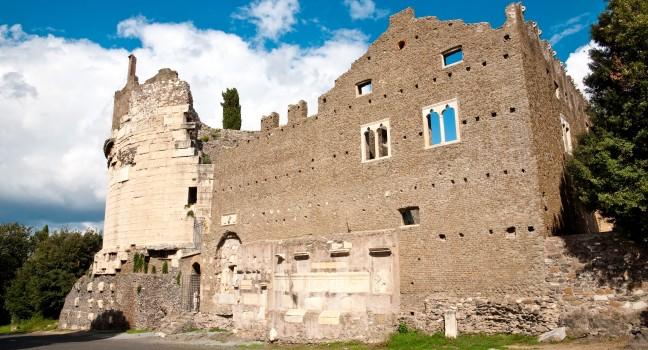Mausoleo di Cecilia Metella

For centuries, sightseers have flocked to this famous landmark, one of the most complete surviving tombs of ancient Rome. One of the many round mausoleums that once lined the Appian Way, this tomb is a smaller version of the Mausoleum of Augustus, but impressive nonetheless. It was the burial place of a Roman noblewoman: the wife of the son of Crassus, who was one of Julius Caesar's rivals and known as the richest man in the Roman Empire (infamously entering the English language as "crass").
The original decoration includes a frieze of bulls' skulls near the top. The travertine stone walls were made higher, and the medieval-style crenellations were added when the tomb was transformed into a fortress by the Caetani family in the 14th century. An adjacent chamber houses a small museum with exhibits on the area's geological phases. Entrance to this site also includes access to the splendid Villa dei Quintili.



